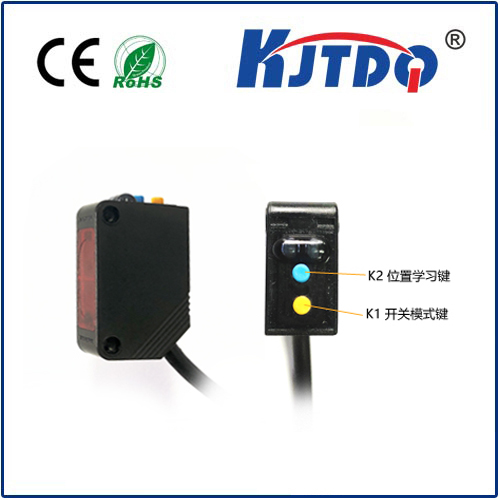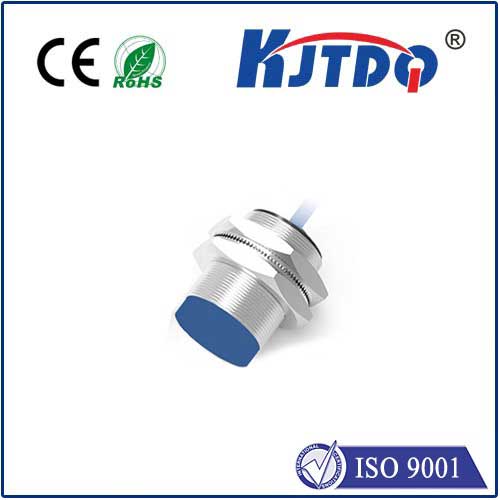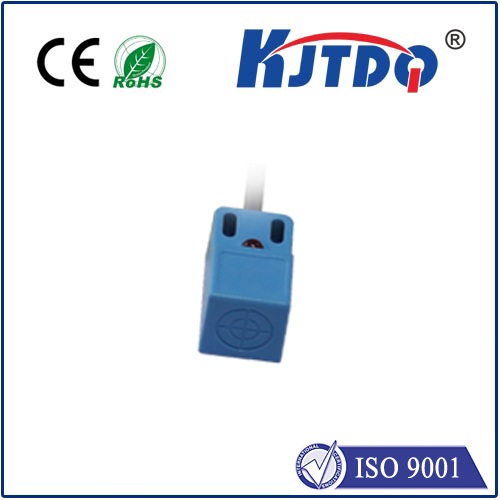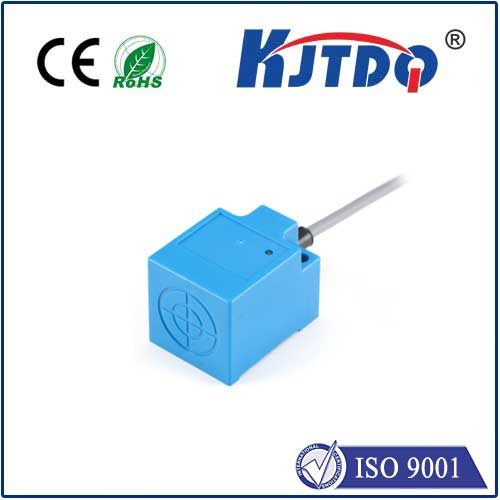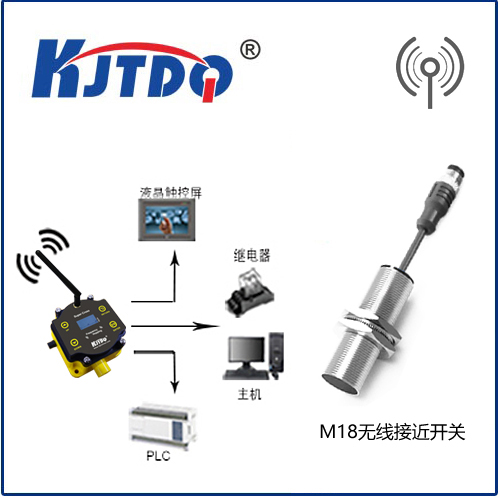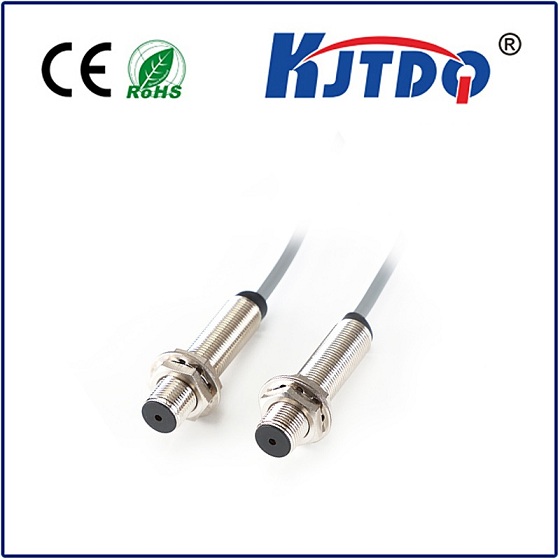automatic door proximity sensor
- time:2025-09-09 00:11:47
- Click:0
Touchless Access: How Automatic Door Proximity Sensors Revolutionize Entryways
Imagine approaching a doorway, your arms full of packages, or perhaps navigating a space with limited mobility. Instead of an awkward struggle, the door glides open effortlessly before you, welcoming you in. This seamless experience, increasingly common in offices, hospitals, stores, and public buildings, is largely thanks to a small but mighty technological marvel: the automatic door proximity sensor. Far more than just a convenience gadget, these sensors are the critical eyes of automated entry systems, enabling touchless access, enhancing accessibility, improving hygiene, and streamlining building operations.
At their core, automatic door proximity sensors are specialized devices designed to detect the presence or movement of people or objects within a designated zone near a door. Their sole purpose is to signal the door’s control mechanism to open safely when needed and close securely when the path is clear. This fundamental task belies sophisticated engineering working continuously to ensure safe and efficient passage.
How Do They See You? Demystifying Sensor Technology
Automatic doors don’t have magical vision; they rely primarily on two key sensing technologies, often working in tandem for robustness:

- Passive Infrared (PIR) Sensors: These are among the most common and cost-effective types. They detect changes in infrared radiation (heat) within their field of view. Warm bodies, like people, emit significantly more infrared than the background environment. As someone moves into the detection zone, the sensor detects this heat signature difference and triggers the door to open. PIR sensors excel at detecting approaching movement perpendicular to the door but are generally less sensitive to slow-moving or stationary objects directly in front of the door.
- Microwave (Radar) Sensors: These sensors emit low-power microwave signals and analyze the reflected waves. Any movement within the detection area causes a shift in the frequency of the reflected wave (Doppler effect), signaling presence. Microwave sensors offer key advantages: they can detect movement through non-metallic materials (like glass doors), are highly sensitive to all types of movement (including slow or lateral approaches), and are less affected by ambient temperature changes compared to PIR. However, they can sometimes be triggered by movement outside the intended zone if not carefully calibrated.
High-end or mission-critical automatic doors often utilize a hybrid approach, combining both PIR and microwave technologies. This dual-sensor strategy maximises reliability; one technology can compensate for potential limitations of the other, ensuring consistent detection performance under varying conditions.
Where Touchless Entry Makes the Biggest Impact
The applications for automatic door sensors extend far beyond simple convenience:
- Healthcare Facilities: Crucial for maintaining hygiene by minimizing surface contact. Vital in sterile environments, allowing hands-free entry for staff carrying equipment or pushing gurneys. Enhances accessibility for patients and visitors with mobility challenges.
- Retail & Hospitality: Creates a welcoming, modern entry experience. Facilitates smooth traffic flow, especially when customers are carrying bags or pushing carts. Enables touchless access, a major hygiene plus post-pandemic.
- Commercial Offices & Public Buildings: Improves accessibility for all employees and visitors, including those using wheelchairs or mobility aids. Streamlines entry during peak times. Contributes to energy efficiency by minimizing the time doors are held open unnecessarily.
- Industrial Settings: Allows hands-free operation for workers carrying materials. Essential in areas where manual door operation could be hazardous or impractical.
- Accessibility Mandates: In many regions, automatic door operators with reliable sensors are required by building codes to ensure equal access for people with disabilities.
The Tangible Benefits: More Than Just Convenience
Investing in quality automatic door proximity sensors delivers significant advantages:
- Enhanced Accessibility: Provides barrier-free entry, a fundamental requirement for inclusivity, enabling independence for wheelchair users and individuals with limited strength or mobility.
- Improved Hygiene & Safety: Enables vital hands-free operation, minimizing contact with potentially contaminated surfaces – a major public health benefit. Sensors also ensure doors close securely after passage, enhancing building security and climate control.
- Increased Energy Efficiency: By precisely controlling door open time based on actual presence detection, sensors significantly reduce unwanted air exchange (both heating and cooling loss) compared to manual doors or poorly timed automated systems. This translates directly to lower HVAC costs and a smaller carbon footprint.
- Optimized Traffic Flow: Automatic doors with responsive sensors manage entry and exit points efficiently, preventing bottlenecks during busy periods, improving customer experience, and freeing up staff resources.
- Reduced Door Wear: Precise opening triggered only upon detection minimizes unnecessary operation cycles, extending the lifespan of the door mechanism itself.
- Modern User Experience: Projects an image of technological sophistication, convenience, and care for occupants and visitors.
Selecting and Installing for Optimal Performance
While the concept is simple, achieving reliable performance requires careful consideration:
- Detection Range and Zone: Sensors must be chosen with an appropriate range to cover the approaching path adequately but not so far as to cause nuisance openings from unrelated movement beyond the doorway. The detection pattern (width and depth) needs to match the specific entrance.
- Mounting Height and Angle: Critical for proper function. Typically mounted 2.2 to 2.5 meters (7-8 feet) above the floor, angled downward to cover the approach zone. Incorrect mounting can create dangerous “blind spots” or cause erratic operation. Following manufacturer specifications is paramount.
- Environmental Factors: Consider potential interference. Strong drafts, direct sunlight (especially on PIR sensors), moving objects like ceiling fans or nearby traffic, or reflective surfaces can occasionally trigger false openings or inhibit detection. Advanced sensors offer environmental compensation features.
- Safety is Paramount: Automatic doors are powerful actuators. Sensors must work reliably to prevent doors from closing on people. Integration with safety edges (pressure-sensitive strips on the door leading edge) is absolutely critical for providing a failsafe redundancy. Sensors prevent unnecessary openings, but safety edges guarantee the door reverses if contact occurs. Regular maintenance and testing of both sensors and safety edges are non-negotiable.
- Power Requirements: Most sensors operate on low-voltage DC power supplied by the automatic door operator unit. Ensuring compatibility and correct wiring is essential during installation.
A Critical Component in Modern Infrastructure
The automatic door proximity sensor is far more than a hidden switch. It’s an intelligent, enabling technology that fundamentally changes how we interact with entry points. By providing reliable, touchless access, these sensors are pivotal in creating safer, more hygienic, more accessible, and energy-efficient buildings. Understanding the types, technologies, and factors affecting their performance is key to selecting, installing, and maintaining systems that deliver seamless, reliable, and safe automatic door operation. They are the unseen facilitators, quietly ensuring our passage is smooth and efficient.






